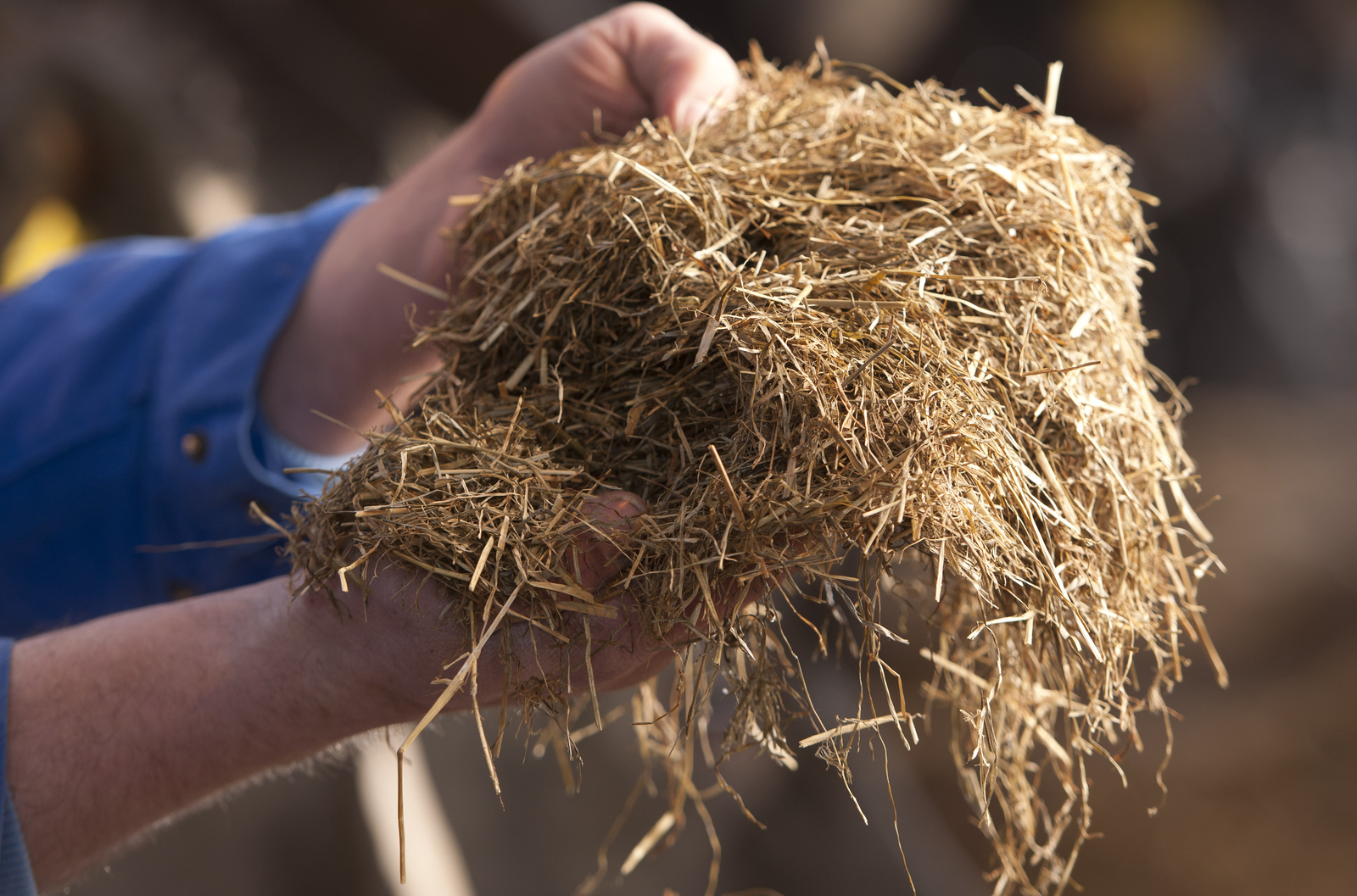Predicting the nutritive value of dairy cattle rations

In intensive dairy production, feed costs represent up to 60% of the total cost of producing milk. Continuous improvement in efficiency is vital to the success of the dairy enterprise. Reliable and rapid feed analyses are therefore required to accurately assess the availability of energy and nutrients in feeds.
Total mixed rations (TMR) are the common way to deliver feed to cattle. Feed ingredients are routinely tested on an individual basis. The energy values of the resulting TMR are calculated under the assumption that values from single components can be linearly added. But this approach ignores the possible digestive interactions, known as associative effects, that can occur between individual ingredients and that can either negatively or positively impact the fermentation outcome and thus the animal’s performance. Microbial efficiency and fermentation rates may be altered as a result, leading to either an underestimation or an overestimation of the nutritive value of the feed or even possible rumen dysfunction due to, say, high fermentation rates.
Prevention of energy losses
Another weakness of traditional digestibility methods are the fact that they focus on end-point measurements and do not provide information on the rates of digestion, which are very important when assessing the amount of nutrients available to the animal. The proportion of energy supplied from quickly or slowly degrading carbohydrates depends on the ration composition. For example, ensiled feeds contain more organic acids; cereal grains contain starch; beet pulp, citrus pulp and soyhulls, and alfalfa contain significant amounts of pectins. Grass hay, molasses and beet pulp contain large concentrations of sugars. The type of nutrients available to rumen microbes affects the rate of degradation in pools and their size, thus determining the type of organic acids produced.
This, in turn, may affect the growth rates of rumen microbes. The goal is to maximise the production of microbial biomass and VFA and minimise fermentation gases (carbon dioxide and methane) that are considered energy losses to the animal. In most situations, unbalanced pools can be corrected by making adjustments to the inclusion rates of the individual feeds. At other times, sourcing other feeds may be required to achieve efficient fermentation. When fine-tuning and reformulation solutions do not work, the use of exogenous enzyme technologies and yeast cultures that target fibre and starch breakdown is another option to help improve the nutritive value of the ration.
In vitro fermentation model
To accurately assess the availability of energy and nutrients in feeds, an in vitro fermentation model* (IFM) has been developed. This model is based on using a holistic rumen simulation technique to quantify the process of microbial fermentation in terms of digestibility, microbial biomass, a critical source of digestible protein for the dairy cow and volatile fatty acids (VFA), a critical source of metabolisable energy for the cow. For each feed sample, more than 20 parameters indicative of rumen fermentation are generated, as well as a nutrient profile based on wet chemistry. In IFM, gas produced from the fermentation of feed is used as a proxy for organic matter digestion. The gas curve is fitted to specific mathematical models to describe the dynamics and the balance of the different carbohydrate fractions. Two major pools are derived; a fast pool (FP), representing rapidly fermented carbohydrates, and a slow pool gas production (SP), corresponding to insoluble available fibre or slowly fermented carbohydrates.
Implementing potential improvement
The IFM evaluation is effective in identifying samples with extreme fermentation profiles (values outside normal ranges) that are most likely to present production challenges. Depending on the limitations of the ration and the willingness of the nutritionist to implement IFM recommendations, potential improvement in milk per cow per day can range from as little as 0.5kg for small ration fine-tuning to as high as 5kg for major ration overhaul, including alternative forage sourcing. For example, a dairy that was suffering from low milk yield and butterfat tests recently submitted samples to the IFM laboratory. IFM analysis showed high gas production and fast fermentation rates as a result of feeding the cows highly fermentable starches and mature corn silage. Substituting this processed corn with dry corn and a portion of the corn silage with dry hay improved the fermentation balance and provided more effective fibre, essential to proper rumination in the cows. These changes resulted in an improvement in butterfat by 0.3 percentage points and milk yield by about 1kg two weeks after implementing changes.
Importance of key fermentation parameters
More than 1,600 feed samples have been analysed at a dedicated laboratory** in Brookings, South Dakota, USA since its inception in 2013. The lab has analysed 110 samples taken from Western Europe, mostly from the United Kingdom. The analysis of relationships between animal performance and the fermentation profile of rations fed to cows reveal the importance of key fermentation parameters – such as the size of fast pool gas production, rates of digestion of the slow pool (i.e. fibre) and starch, true dry matter digestibility (TDMD) (or total gas production), VFA and microbial biomass – with respect to positively affecting milk production potential.
In addition, 50 to 70% of the samples analysed have the aforementioned parameters at below average values for the top 90% of producing herds. Similarly, more than 20% of those samples are one standard deviation below these key values, pointing to the issue of low-quality feeds. These comparisons suggest that there is significant potential to alter the make-up of the feeds to promote more efficient rumen fermentation and better milk yield and feed efficiency.
Differences between Europe and the US
Comparing the fermentation and nutrient profiles of European feeds with North American feeds exposes key differences that reflect variations in feeding systems, available feedstuffs and their nutritional quality. TMR samples from Europe contained 19% more fibre (NDF) and 15% less starch. On average, the estimated energy value (in vitro digestibility, VFA net production) of the European TMR was 9% lower than North American TMR. This difference can be further increased because of slower fibre digestion rates (9% lower). Slow fibre digestion affects feed intake and animal performance and is indicative of poor forage quality. When compared with a high-performance fermentation “ideal” profile (> 45kg of milk/d), these samples become even more limiting, having 12-15% less energy value. Under these conditions, the potential for higher milk production may be limited by high forage intake and variable forage quality. Grain and non- forage fibre sources that are rich in soluble fibre and can be quickly digested are an option to help improve lactation performance. The use of feed additives that promote better rumen fermentation and fibre utilisation is another tool to achieve better lactation efficiency. When implementing changes for optimal rumen fermentation, it is important to ensure that a balanced ration that promotes a healthy rumen is being fed to the cows.
Prediction of methane emission
Another practical application of the IFM tool is the ability to more accurately estimate enteric methane emission, i.e. methane produced during the fermentation of feeds in the rumen, where improvements of up to 45-55% of the estimated values can be obtained compared with available methods. This is important, knowing that the rumen can account for 45% of the total carbon footprint and that inaccurately calculating the rumen’s contribution can lead to errors of up to 25% when calculating the total farm carbon footprint. In 2013, The Carbon Trust, an organisation that measures and certifies the environmental footprint of organisations, supply chains and products, verified that IFM is an effective tool for estimating farm-specific enteric methane emission from specific feeds.
In conclusion, rumen fermentation outcome is a complex process that depends primarily on substrate availability and the efficiency of microbial growth. Thus, a simultaneous evaluation of all digestion parameters (as done with IFM), rather than using a single metric, is required when drawing conclusions and making potential adjustments to a diet.
*Alltech® IFM **the Alltech® IFM laboratory











